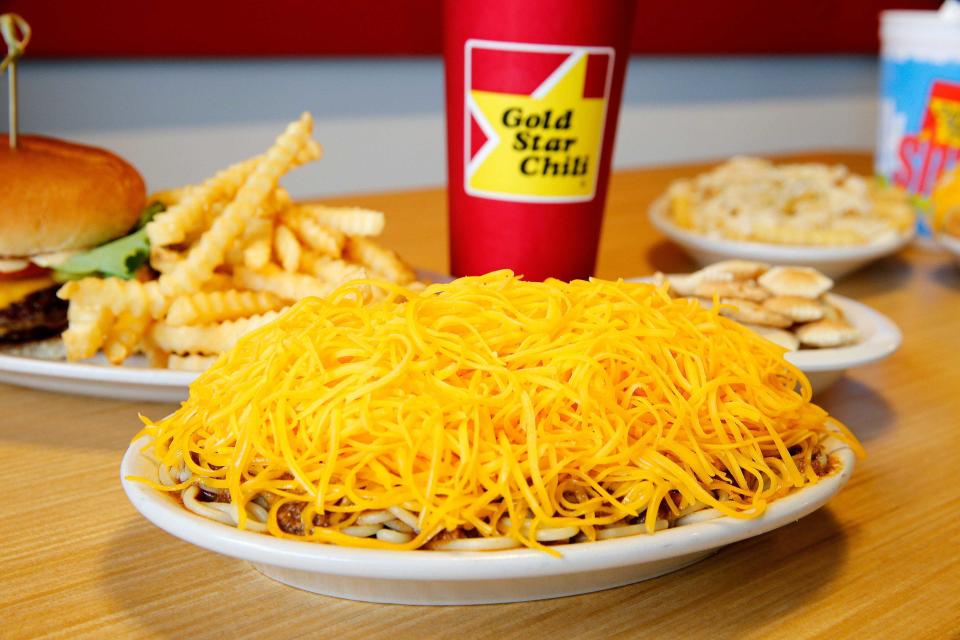Opinion: Origins of Cincinnati-style chili anything but a 'war'
October 24, 1922 is a special day in Cincinnati’s history. It’s the day that brothers Ivan "John," Athanas "Tom," and Argiro Kiradjieff opened Empress Chili in downtown Cincinnati. Serving a unique dish that blended an Americanized version of chili con carne with a secret spice blend to lend it a unique flavor, the brothers created what all we know now today as Cincinnati-style chili.
This week, families from nearly every chili parlor in the region gathered to celebrate the 100th anniversary of the iconic dish that started at Empress, but we need to celebrate more than just the dish that’s become synonymous with Cincinnati.
The three Empress brothers also opened their doors to other immigrant families who learned the basics of how to make this delicious concoction. Those men eventually set out on their own to open chili parlors in neighborhoods throughout the city and region. You might recognize some of those names today: the Sarakatsannis family that went on to start Dixie Chili in 1929 in Newport, the Lambrinides family that opened the first Skyline Chili in Price Hill in 1949, and so many more.
We know that every Cincinnati native has their favorite chili parlor, and some even refer to these passionate debates on the merits of each version as "chili wars," but the generations that came before us saw it as anything but. They, starting with the Kiradjieff family and their original restaurant, worked with each other to help families build their own version of the American Dream.
It was in this same spirit that my dad and his three brothers purchased their very first restaurant, Hamburger Heaven in Mt. Washington, in 1964 after immigrating from their native Jordan in search of opportunities for themselves and their family. The restaurant came with its own recipe for Cincinnati-style chili.
It quickly became the most popular menu item and the brothers decided to simplify the operation (which included removing burgers, fries, breakfast and other food classically found in diners) and focus on the chili. In 1965, Gold Star was born and we began franchising, which created the opportunity for other families to reach for their own American Dream.
This spirit of camaraderie and support is what allowed my family’s business and so many others to thrive for many years and many generations, providing a better life for people who had the same belief that this country was a place where they could work hard and be successful.

The David/Daoud family wouldn’t be where we are today without the Kiradjieff dream that started with Empress. Today, families across several generations are involved in all facets of our family’s business. Chili restaurants continue to feed the entrepreneurial spirit of families seeking the American Dream, as well as employ thousands within the region.
Personally, it’s been a meaningful week for me as part of the second chili generation reflecting on everyone that came before us and those walking with us. It’s been an absolute joy spending time getting to know the incredibly warm Kiradjieff family over the last few days. We owe it all to John, Tom and Argiro Kiradjieff and the generations of their family that followed.
From the David/Daoud family to the Kiradjieff family: Thank you. You made the dreams of so many possible and we all owe you our most sincere, humble thanks. You will always have a seat at our family’s table.
Roger David started his career at Gold Star as a dishwasher at the Milford, Ohio location when he was a young teenager. He now leads the organization that boasts two iconic brands in its portfolio as president and CEO of GSR Brands, the franchisor of Gold Star and Tom & Chee. He is the second generation of leadership for the family business founded by his father and uncles in 1965.
This article originally appeared on Cincinnati Enquirer: Opinion: Origins of Cincinnati-style chili anything but a 'war'

